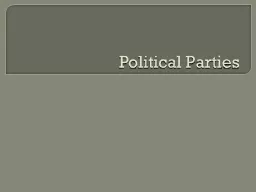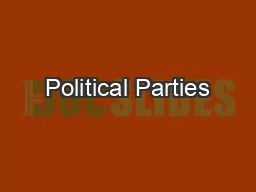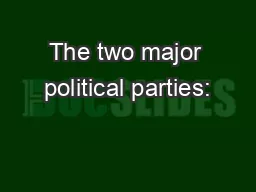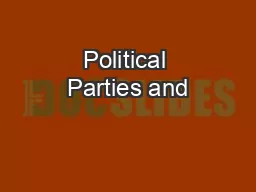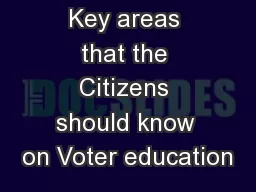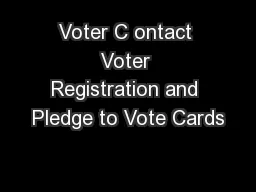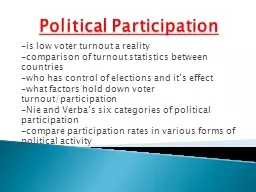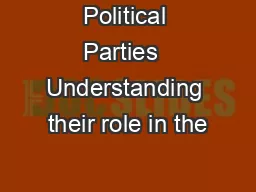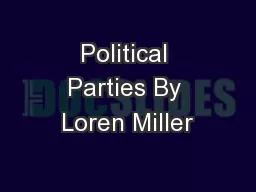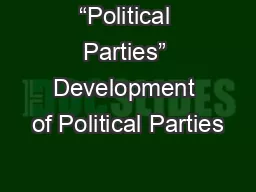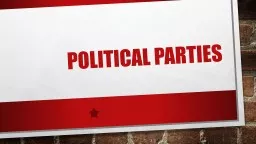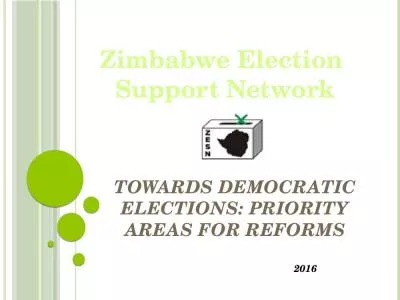PPT-New political parties through the voter´s eyes
Author : widengillette | Published Date : 2020-08-05
Alexander Wuttke kunkakom June 11 2016 Chair for Political Psychology University of Mannheim Better the devil you dont know than the devil you do The gap in
Presentation Embed Code
Download Presentation
Download Presentation The PPT/PDF document "New political parties through the voter�..." is the property of its rightful owner. Permission is granted to download and print the materials on this website for personal, non-commercial use only, and to display it on your personal computer provided you do not modify the materials and that you retain all copyright notices contained in the materials. By downloading content from our website, you accept the terms of this agreement.
New political parties through the voter´s eyes: Transcript
Download Rules Of Document
"New political parties through the voter´s eyes"The content belongs to its owner. You may download and print it for personal use, without modification, and keep all copyright notices. By downloading, you agree to these terms.
Related Documents


